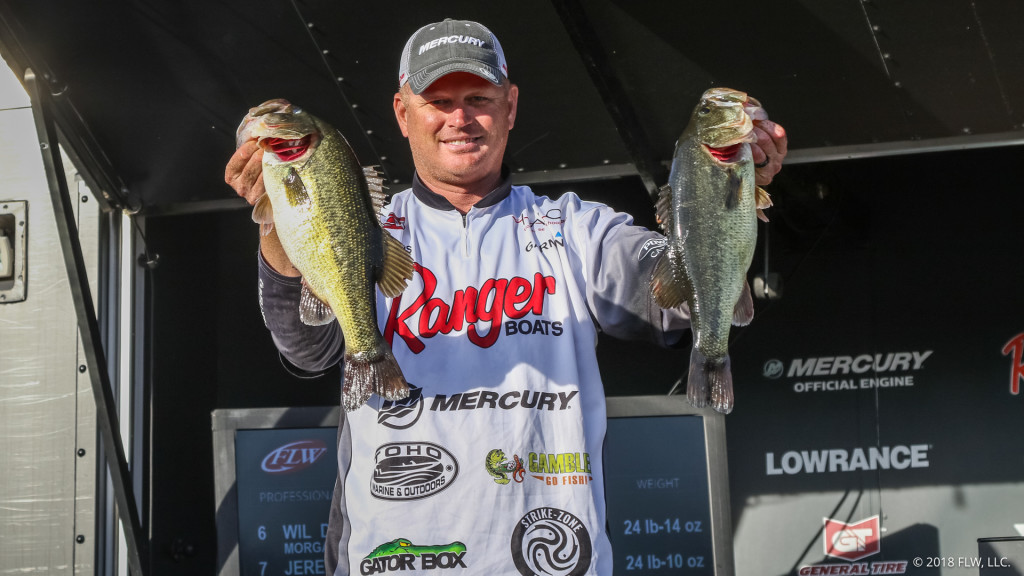Previewing the St. Johns River
Toyota Series Southern Division kicks off on the famed Florida fishery

With the addition of new divisions on the 2020 Toyota Series schedule, Florida anglers (and anyone else hoping for a full schedule of Florida fisheries) get a trio of Sunshine State staples on the docket this year, starting with the St. Johns River on February 13.
The St. Johns has been fishing tough the last couple months, but mid-February is typically when bass move up to spawn in the river system that includes three main basins (upper, middle and lower) as well as Lake George, which very well could come into play in a big way come tournament time.
Tournament details
Toyota Series Southern Division
Palatka, Fla.
Feb. 13, 2020
Hosted by the Putnam County Tourist Development Council
How the fishery sets up
The St. Johns River is a sprawling 310-mile-long river system with relatively low flow, with an average flow rate of .3 miles per hour. There’s current to be found, but for the most part, the St. Johns doesn’t fish like many river systems elsewhere in the country. Additionally, it’s one of the few river systems in the U.S. that flows north.
Made up of a few drainage basins and the Lake George and Ocklawaha River watersheds, it’s possible for anglers to make long runs to get away from competitors and find fish – and there are good fish to be found. Look no further than the 31-pound, 7-ounce bag Rick Clunn hauled in there on day three of the Bassmaster Elite Series event in 2016.
The St. Johns isn’t as grassy as its more southern Florida counterparts, and when the fishery’s giant largemouths decide to spawn, there’s a bevy of tactics in play that we probably wouldn’t otherwise see on Okeechobee or the Harris Chain of Lakes.
What to expect
According to Toyota Series pro Kyle Walters, who hails from Grant Valkaria, Fla., and finished second at the 2019 FLW Cup, mid-February is when the St. Johns really starts getting good for local anglers.
“The middle to end of February – right around the time we’re getting there – should be real good,” he says. “We’ve got a full moon on the 7th, we’ve got some warming weather, and if they’re not spawning, they’re going to want to soon.”
Unlike some of the other well-known fisheries in Florida – particularly in the southern part of the state – largemouth don’t typically spawn throughout the winter months. On Okeechobee, for instance, it’s not uncommon for fish to start spawning in the late fall all the way through spring. Not so on the St. Johns.
“The St. Johns is a little farther north to where they won’t really do that, where it’s not one of those string-spawns like say Okeechobee or anything south of Highway 60,” Walters explains. “They’ll spawn more frequently down there, but when you go up further – they’ll still string spawn – but there will be a major time when they come to the bank and spawn on the St. Johns.”
Walters expects Lake George to play a big role in this tournament if that’s the case. At the very least, there figures to be a lot of fish in the prespawn phase, moving up shallow to prepare to spawn.
As for weights, Walters thinks it should take about 33 pounds over two days to make the top 10 cut and 63 pounds over three days for the win.
Baits and techniques
Flipping, frogging, worms, swim jigs and vibrating jigs always play in Florida, especially in grassy fisheries, but Walters keys in specifically on two not-so-Florida techniques that can be major players around the spawn on the St. Johns.
“If you can find fish that are prespawn, you can catch them on a crankbait and Carolina rig and baits like that in 12 to 16 foot of water, which doesn’t normally play on Okeechobee or Toho or Kissimmee or Harris, which are big grass lakes,” says Walters. “It’s almost like a river system, and when they do go to spawn, they come to the banks, and that’s why they catch them so good.”
Fishing has been tough recently – only five anglers weighed in more than 15 pounds in the Phoenix Bass Fishing League presented by T-H Marine Gator Division opener earlier this month – but it did take 26 pounds to win that event. If the weather continues trending upward and fish decide to move up soon, 20-pound bags are going to be a lot more common in this derby.